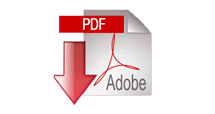In this lesson you will learn the importance of providing the outline for a realistic marketing plan. If done correctly, this will avoid you appearing to the agent and publisher as just another wannabe writer.
In the previous lesson you learned how to construct an effective biography. In this lesson you will learn how to present a marketing plan that will impress agents and publishers.
This lesson covers the final section of your final paragraph. By this point you will have clearly identified your book’s genre, its readership and your value as a writer. This final section shows what you are prepared to do to promote your book.
Marketing budgets, for even the biggest publishers, are becoming squeezed and any significant marketing opportunities a writer can bring will be a big advantage in their bid to secure a book deal. In fact, publisher Michael Hyatt says he intentionally seeks out writers with a significant online presence.
Offline Aspects
To begin you should be listing all offline contacts you have access to that will set you aside from other writers. All publishers will have a marketing department with access to many traditional newspapers and magazines. However, if you have fast-track access to offline organisations, which are relevant to your book, this is a huge bonus. For example, if you have written a book about rock climbing and are the editor of a world-renowned rock climbing magazine, then this needs to go into your pitch.
The importance here is relevance. The better access you can have to a potential target reader, the more attractive you will appear to the publisher.
Online Aspects
The need for an online presence is well established. Before pitching you should have a well established blog/website, as well as active social media channels. However, when detailing your on line aspect it is essential that you offer precise and detailed information.
Blog: Include your blog/website name and url (web address). If you have a blog, make sure you have posted regularly in the weeks running up to pitching. There is nothing worse than a dead blog! It is also essential that you provide some kind of stats to show the reach of your blog. Don’t be worried by your numbers, your blog is what it is. However, do remember that it is relatively easy to work out the traffic coming to a blog, so you might as well be upfront about your efforts. I would suggest you include the following stats:
- Unique visitors per month. This is the number of unique individuals who have visited your blog in the last 30 days. For example, one individual may visit your blog three times in one week. However, this would only count as one unique visitor. Note: RSS and email subscribers do not count toward your total. For a true count, you must add the number of subscribers you have to this monthly total.
- Page views per month. This is the number of pages your visitors have viewed in the last month. If you divide this number by your total unique visitors, you will get the average number of pages viewed by each visitor.
- Percent change in the last 12 months. This is the rate of growth in the last 12 months. Publishers want to know if your audience is growing and at what rate. Here’s the formula: unique visitors in the last 30 days, minus your unique visitors for the same period 12 months ago, divided by your unique visitors for the same period 12 months ago, multiplied by 100.
- Average number of comments per post. This is a little trickier, because not all commenting systems keep track of this stat. Disqus, the system I use (and highly recommend) provides an “analytics snapshot” that tells me how many comments I received today, last month, and all time.
- Total number of blog subscribers. The people who subscribe via email or RSS represent your most loyal readers or ‘super-fans’. They have made the effort to sign up to receive your content. More importantly, they have given you permission to push content to them. This permission-based asset is arguably the most important asset you have as an author.
Twitter: Include your twitter name. It is OK to just say, for example, @bubblecow. you don’t need to include a link to your account. Also include your follower numbers at time of sending. Finally, I would also look to include a social metric such as your Klout score.
Facebook: Include the url and total number of subscribers.
Other: If you are active on other channels (Quora, YouTube, Google+ etc.) then you should be including links to your profiles and some kind of figure to define your influence. My rule of thumb here would be to only include channels in which you are active. Resist the temptation to trow in that old Mysapce page, when you have even looked at it in years.
Summary
- List all relevant offline contacts
- Included meaningful stats
- Be creative!


